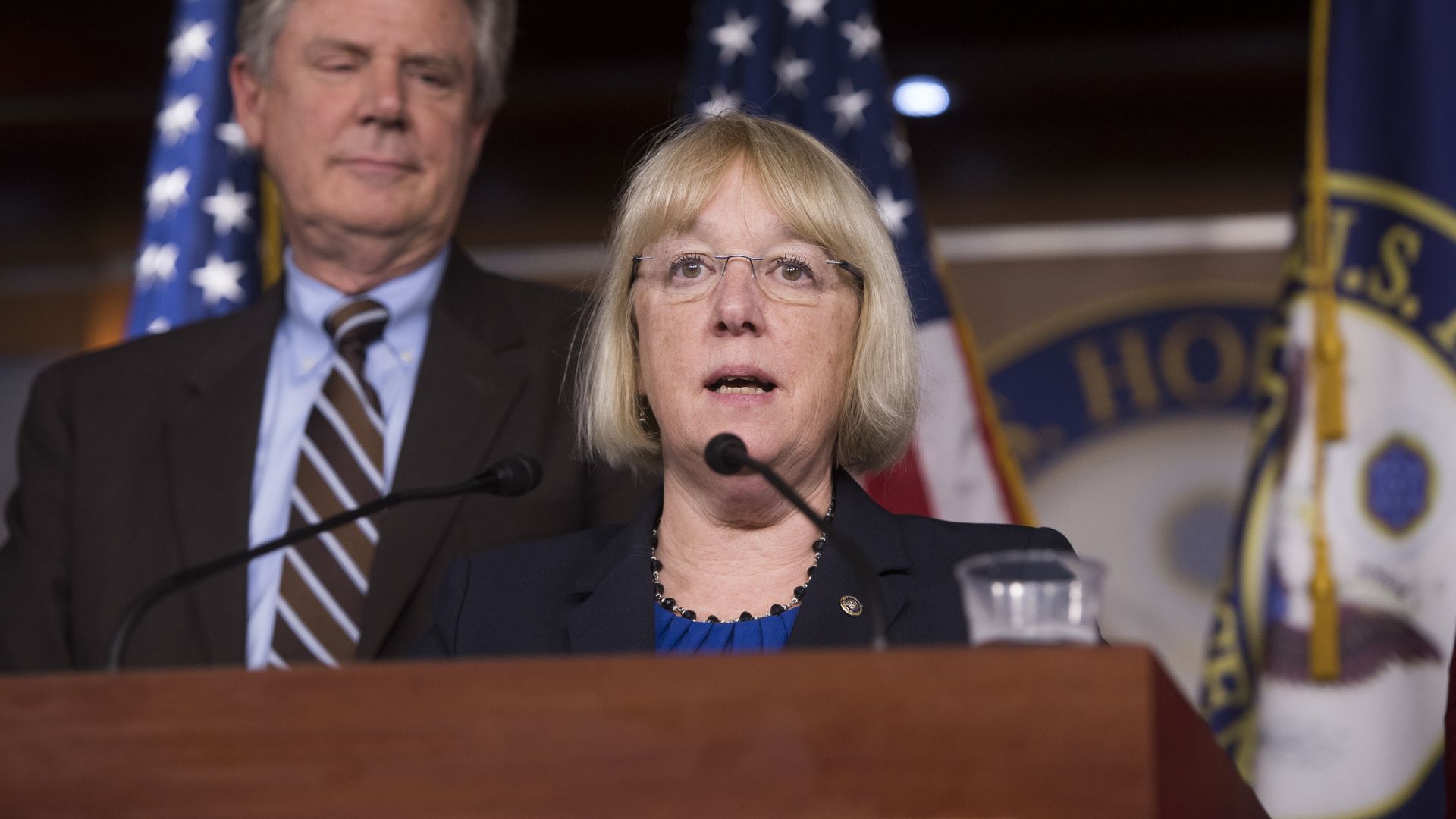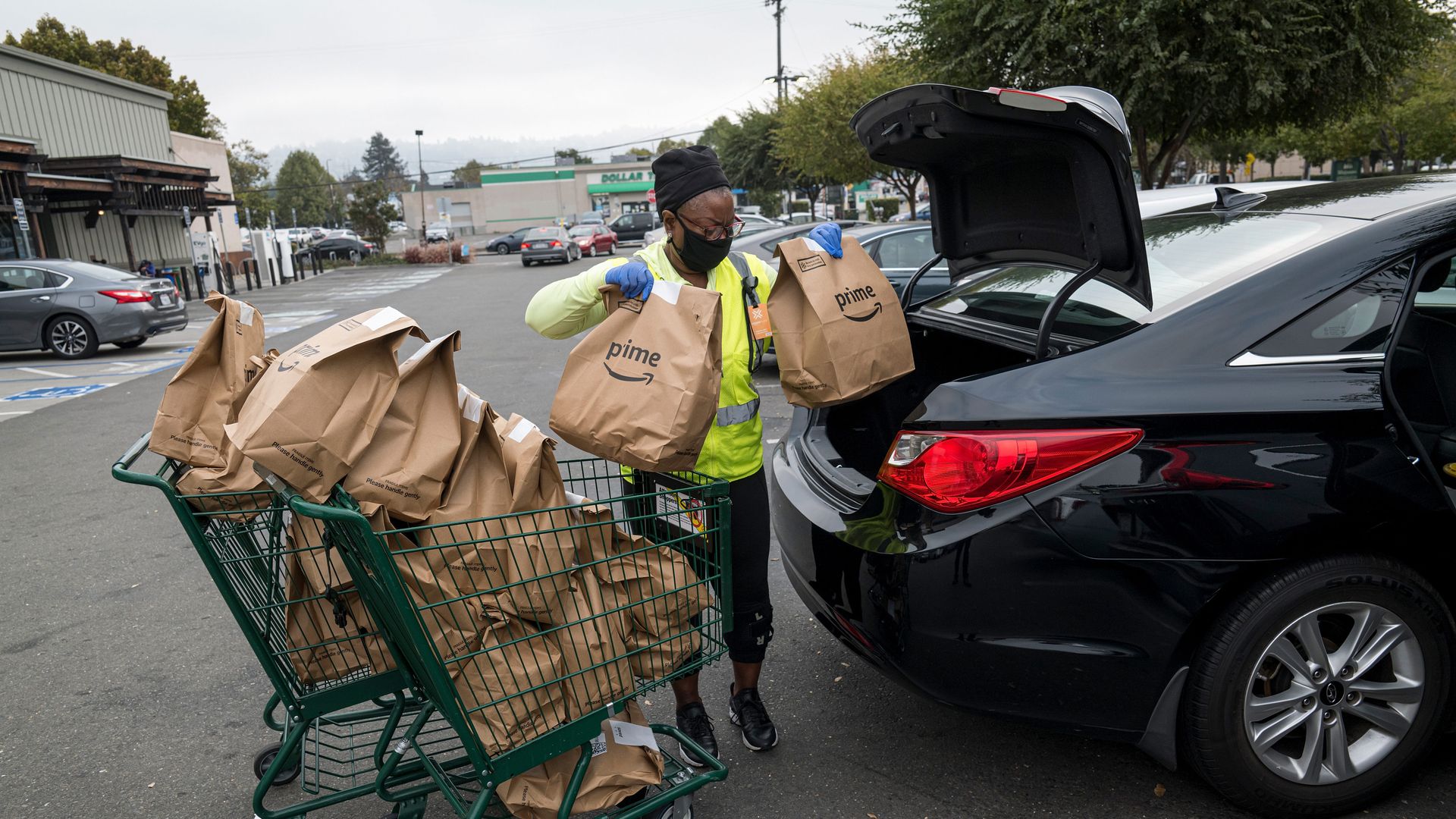| |
| |
| |
| Presented By UnitedHealth Group |
| |
| Vitals |
| By Tina Reed ·May 27, 2021 |
| Good morning. Situational awareness: The "lab leak theory" is officially a thing again. Today's word count is 985 words, or a 4-minute read. |
| |
| |
| 1 big thing: Interest spikes in health crisis communication |
 |
|
| Illustration: Annelise Capossela/Axios |
| |
| A number of U.S. colleges and universities say they've seen a surge of students who say the COVID-19 crisis inspired them to pursue the public health field, and crisis communication in particular. Why it matters: The pandemic exposed the need for and challenges of well-executed public health messaging — particularly in a time rife with misinformation campaigns and polarizing politics, Axios' Marisa Fernandez reports. "The public wants answers in real-time and there's been evolving recommendations and that's been really hard for consistent messaging," Greg Hoplamazian, associate professor of communication and academic director of Loyola's University's emerging media program, tells Axios. The big picture: Public health graduate-level degree programs like epidemiology and health policy saw a 40% spike in applications between March 2020 and March 2021, per a recent report from the Association of Schools and Public Health Programs. Colleges and universities have begun responding to the fast-growing interest in the field. - University of Central Florida located a new communication campus closer to its medical facilities last year to reach more nursing and emergency management students, said UCF professor of strategic communication and director of graduate studies Timothy Sellnow.
- Ohio State University began offering its health communication certificate program for undergraduates at the beginning of the pandemic.
- Loyola University has seen an uptick in medical students enrolling in health communication classes in the fall. Hoplamazian said students have told him they're inspired by the emergence of viral videos of some doctors containing COVID misinformation and a general feeling of being unprepared to speak to patients.
What's next: Health and risk communication experts acknowledged a shift this past year to better prepare students for the politically charged responses that led to death threats and resignations from people in the field. Go deeper. |
    |
| |
| |
| 2. New coronavirus cases fall for fifth week |
 Data: CSSE Johns Hopkins University; Map: Andrew Witherspoon/Axios The pace of new coronavirus infections in the U.S. fell by nearly 20% over the past week — the fifth straight week of double-digit declines, Axios' Sam Baker and Andrew Witherspoon report. The big picture: America's vaccination drive is working, and as it continues to expand, the country can safely get back to many of its pre-pandemic routines. By the numbers: The U.S. averaged roughly 24,000 new cases per day over the past week, a 20% drop from the week before. Cases have fallen every week since mid-April. - 38 states improved over the past week. Only four states saw their outbreaks grow.
- This is happening because of the vaccines. Half of American adults are fully vaccinated, and roughly 62% of adults have gotten at least one shot, according to the CDC.
What's next: The pandemic continues to rage overseas, and the Biden administration will face increasing pressure to export more vaccines now that the virus is so well contained in the U.S. Each week, Axios tracks the change in new infections in each state. We use a seven-day average to minimize the effects of day-to-day discrepancies in states' reporting. |
    |
| |
| |
| 3. The public option fight gets new life |
 |
|
| Sen. Patty Murray speaks alongside Rep. Frank Pallone during a press conference on Capitol Hill in 2017. Photo: Saul Loeb/AFP via Getty Images |
| |
| Top congressional Democrats signaled yesterday that the fight over a public option isn't over — and industry groups immediately reminded them they still hate the idea, Axios' Caitlin Owens writes. President Biden campaigned on a public option, and expanding the role of the government in providing health insurance is a top party priority. - But industry groups are more than ready to go to war over the measure, which has significant financial implications.
Driving the news: Sen. Patty Murray and Rep. Frank Pallone, who both chair major health care committees, released a call for ideas on how to best design a public option. - The subject had all but disappeared from public discourse lately.
What they're saying: "We do not support the introduction of a public option plan that could increase the strain COVID-19 has placed on our health care system," the American Hospital Association said in a statement. Be smart: Reducing provider reimbursement rates is a feature, not a bug, of a public option. It's part of what makes a government-run plan cheaper than private insurance. - One of the areas included in the request for ideas is how prices should be determined — one of the most controversial elements of a public option.
- America's Health Insurance Plans said the proposal "represent[s] a huge step backward."
What we're watching: How much money the health care industry spends in the near future on ads attacking the idea. |
    |
| |
| |
| A message from UnitedHealth Group |
| Working to improve maternal care in underserved communities |
| |
 |
| |
| Nearly 1 in 4 women do not receive essential prenatal care. - Through local community partnerships in states like Nevada, Hawaii, Michigan and Ohio, UnitedHealth Group is helping to reduce maternal health disparities.
Learn more about how we're advancing health equity. |
| |
| |
| 4. Reality check on Amazon's rumored pharmacies |
 |
|
| An independent contractor wearing a protective mask and gloves loads grocery bags into a car outside a Whole Foods Market. Photo: David Paul Morris/Bloomberg via Getty Images |
| |
| Amazon is contemplating opening physical pharmacies, including within its Whole Foods locations, Business Insider reports. Reality check: Amazon still isn't disrupting the prescription drug industry. Amazon is maybe, possibly considering a way to capture a marginally bigger piece of the market, Axios' Bob Herman writes. By the numbers: Amazon owns approximately 500 Whole Foods stores. - If Amazon built and staffed up pharmacies in each of those stores, along with some standalone pharmacies, its footprint would still pale in comparison to the pharmacies owned by CVS Health (9,900), Walgreens (9,000), Walmart (5,000), Rite-Aid (2,500), Kroger (2,300) and other chains.
- As we reported in 2018, after its purchase of online drug retailer PillPack, Amazon "will have to build or acquire more parts to make a big difference." More pharmacies, or a pharmacy benefit manager, would likely need to be next — if Amazon even proceeds with this direction.
What's clear: Amazon is playing within the rules of the current system. - Amazon contracts with PBMs and health insurers. But "Amazon does not necessarily have a significant cost advantage over other pharmacies," Adam Fein of the Drug Channels Institute wrote in November.
|
    |
| |
| |
| 5. COVID immunity could last years |
 |
|
| Illustration: Brendan Lynch/Axios |
| |
| Immunity to coronaviruses lasts at least a year and could possibly last a lifetime, two new studies have found. Why it matters: This could offer some peace of mind for lingering concerns about how long protection against COVID-19 will last, the New York Times reports. - The studies indicate those who've recovered from COVID-19 and got vaccinated won't need boosters, per the Times.
- Meanwhile, those who weren't infected but were vaccinated will likely need boosters.
|
    |
| |
| |
| A message from UnitedHealth Group |
| Helping to advance health equity with actionable insights |
| |
 |
| |
| For more than 30 years, the United Health Foundation's America's Health Rankings has provided actionable insights to identify health disparities across the U.S. - Our latest report identifies disparities among seniors, including food insecurity and risk of social isolation.
Read the report. |
| |









No comments:
Post a Comment